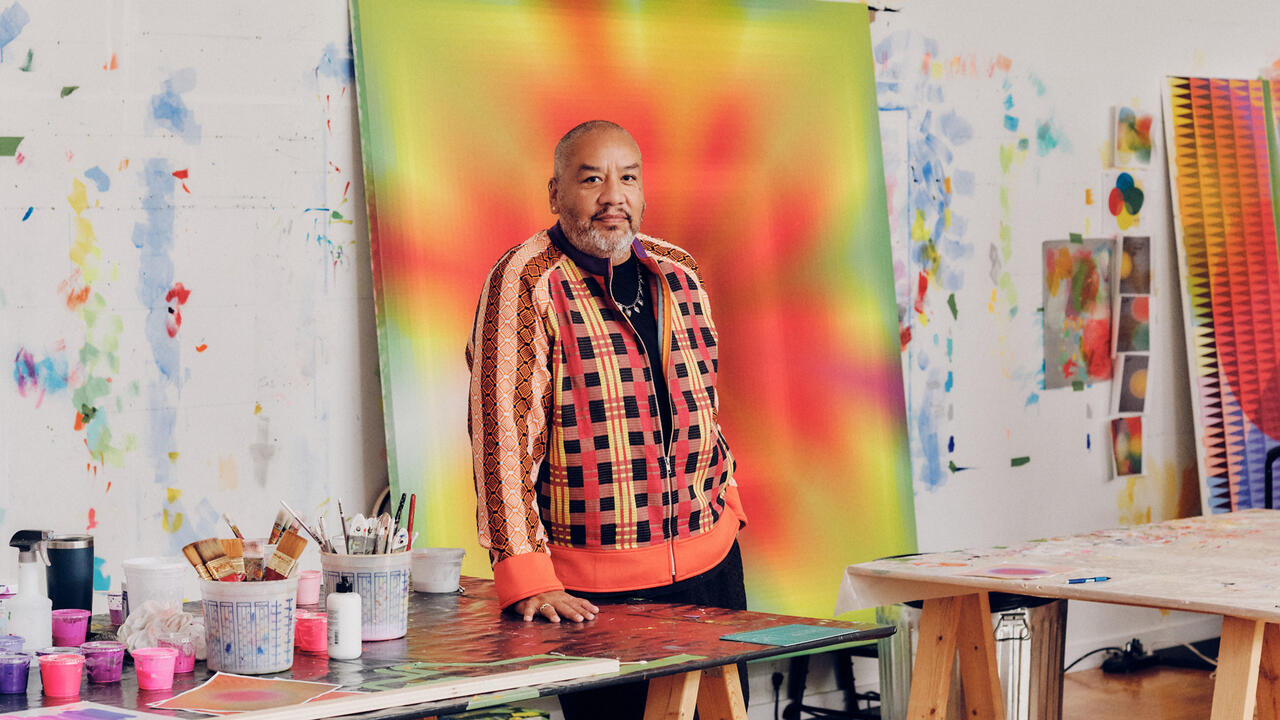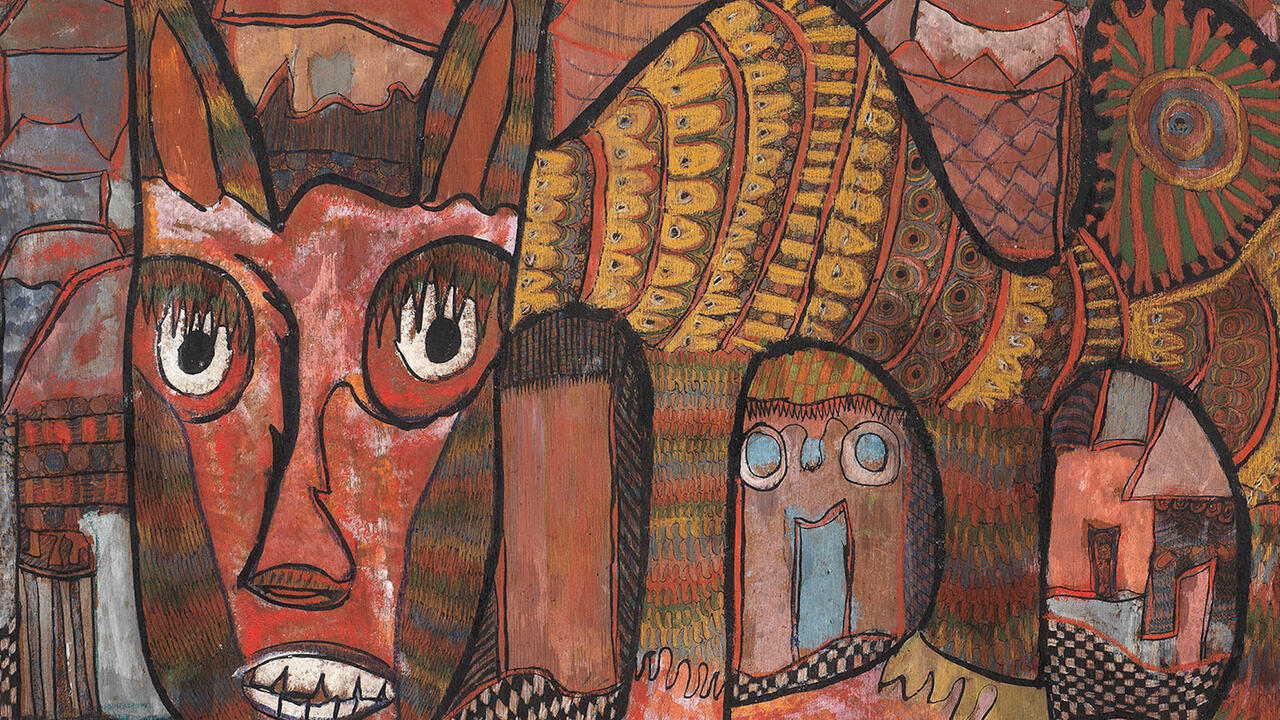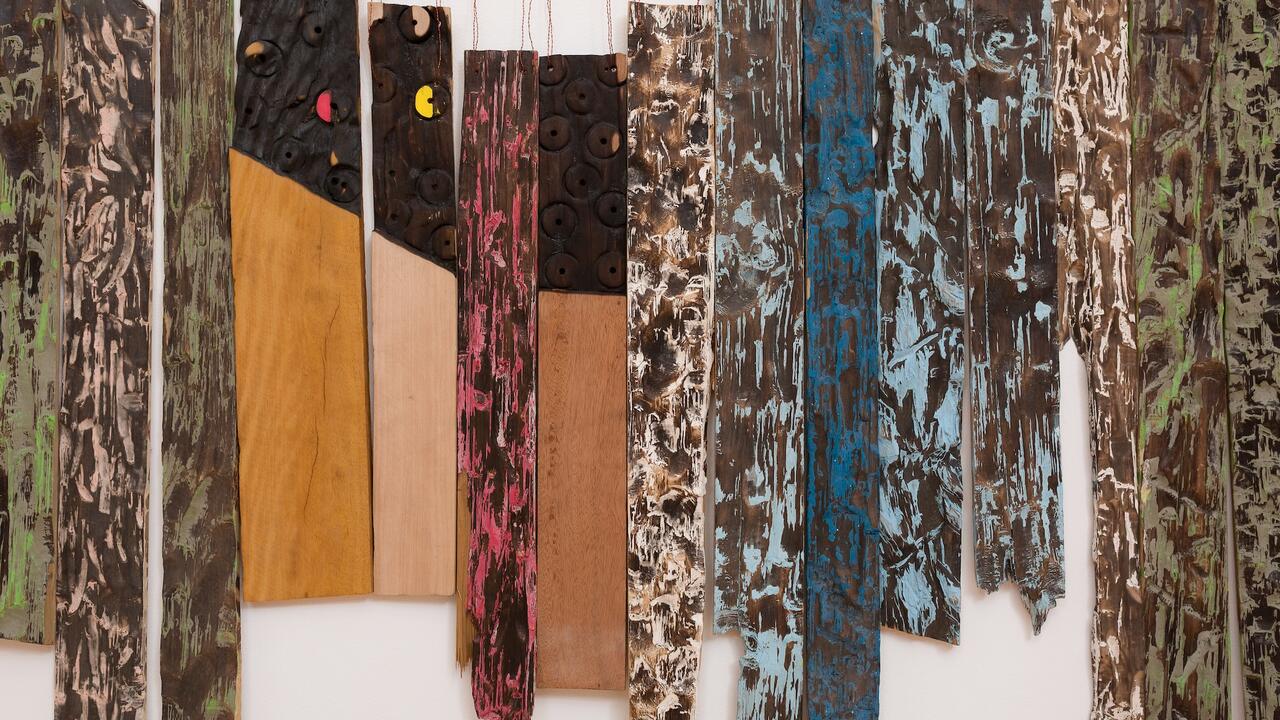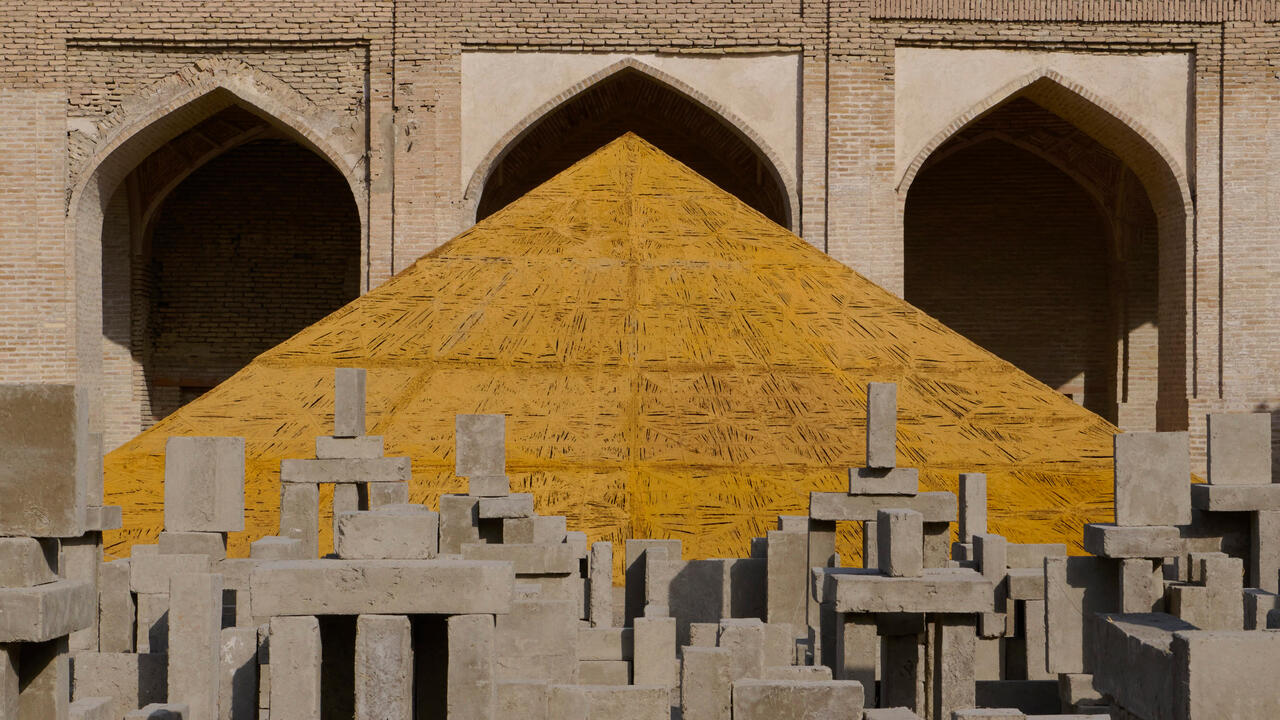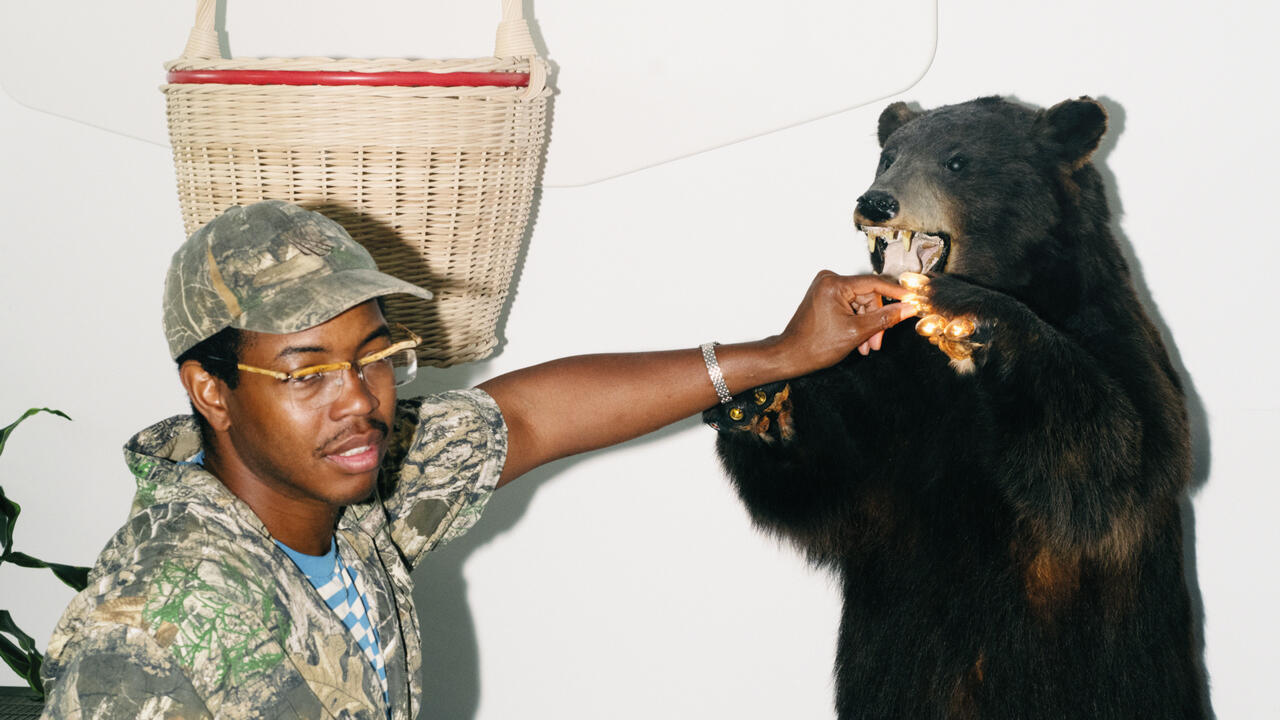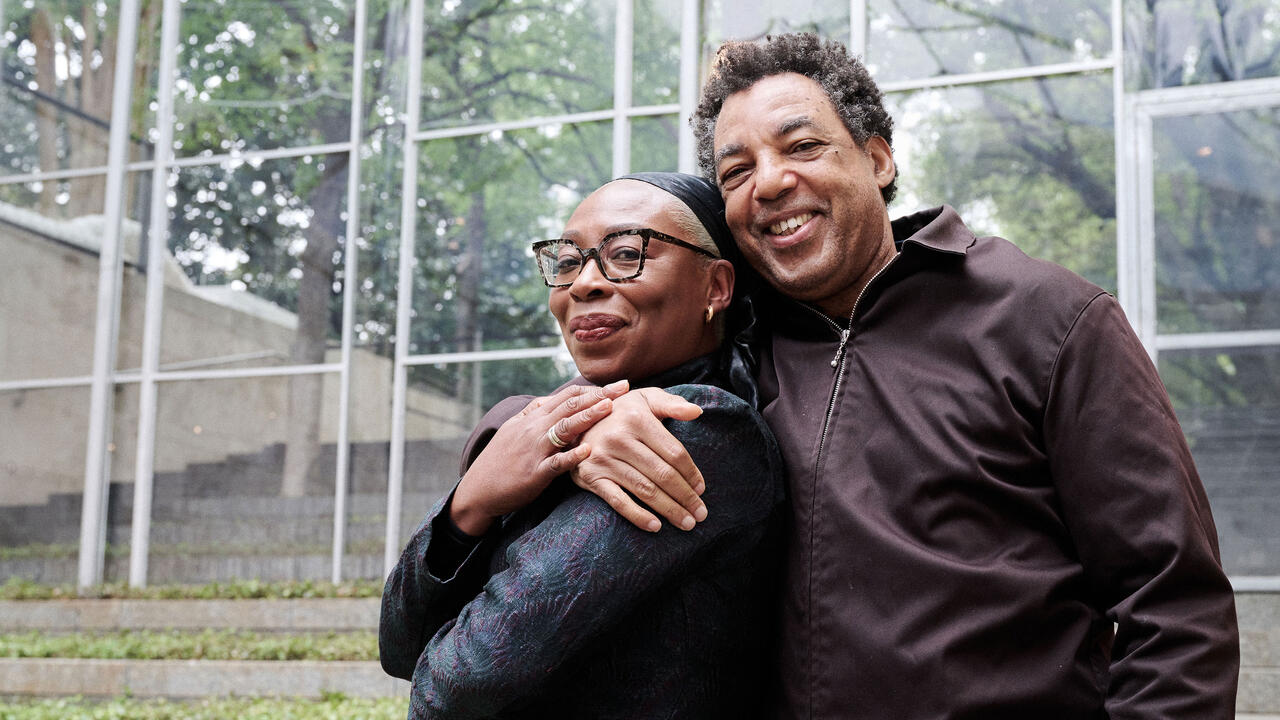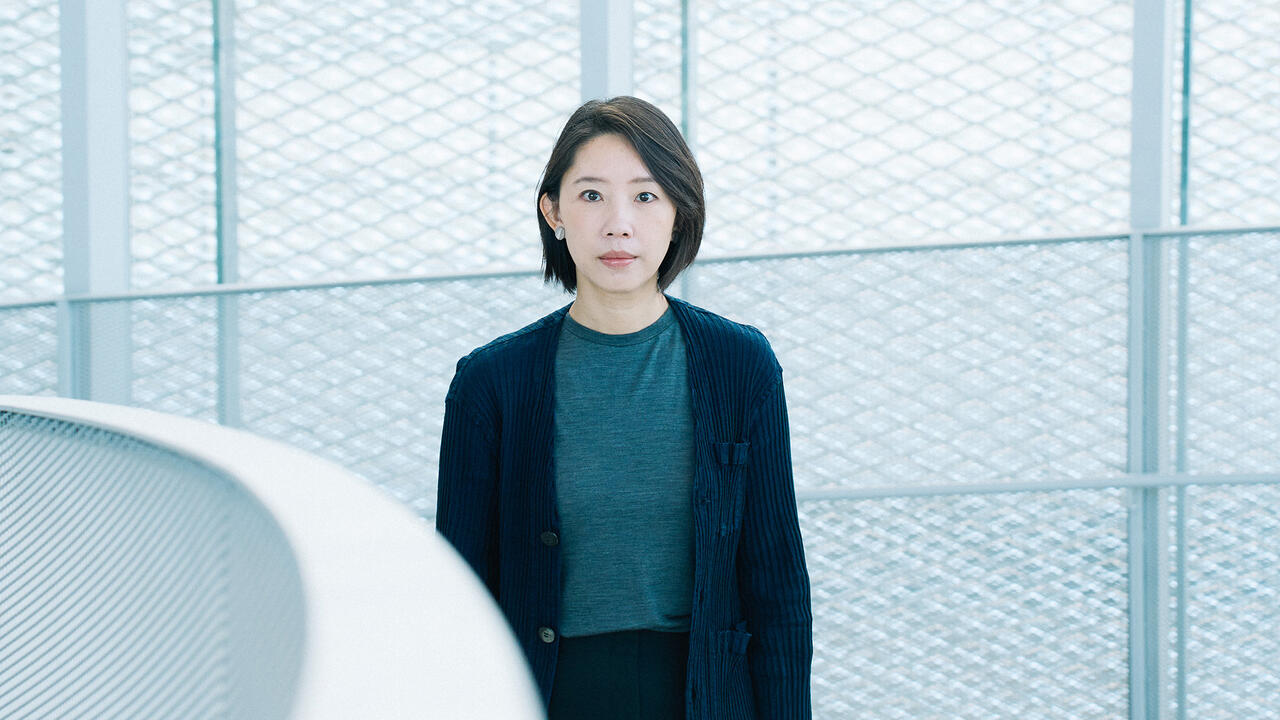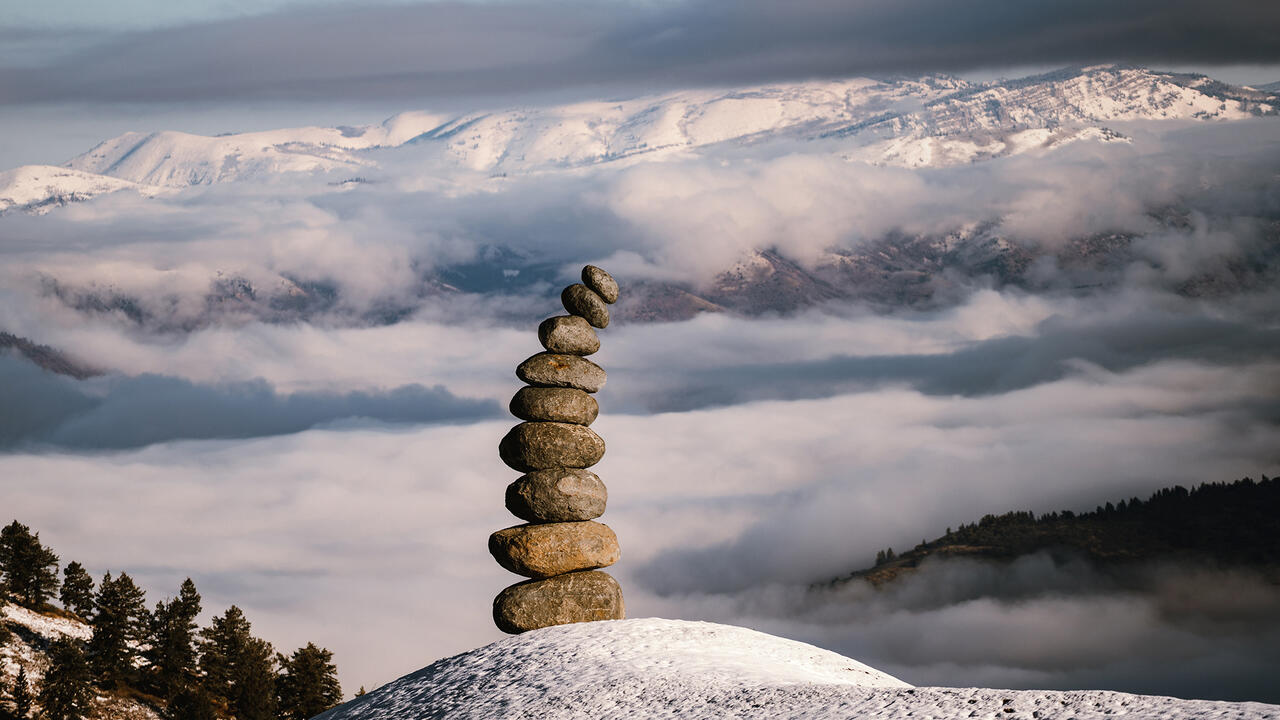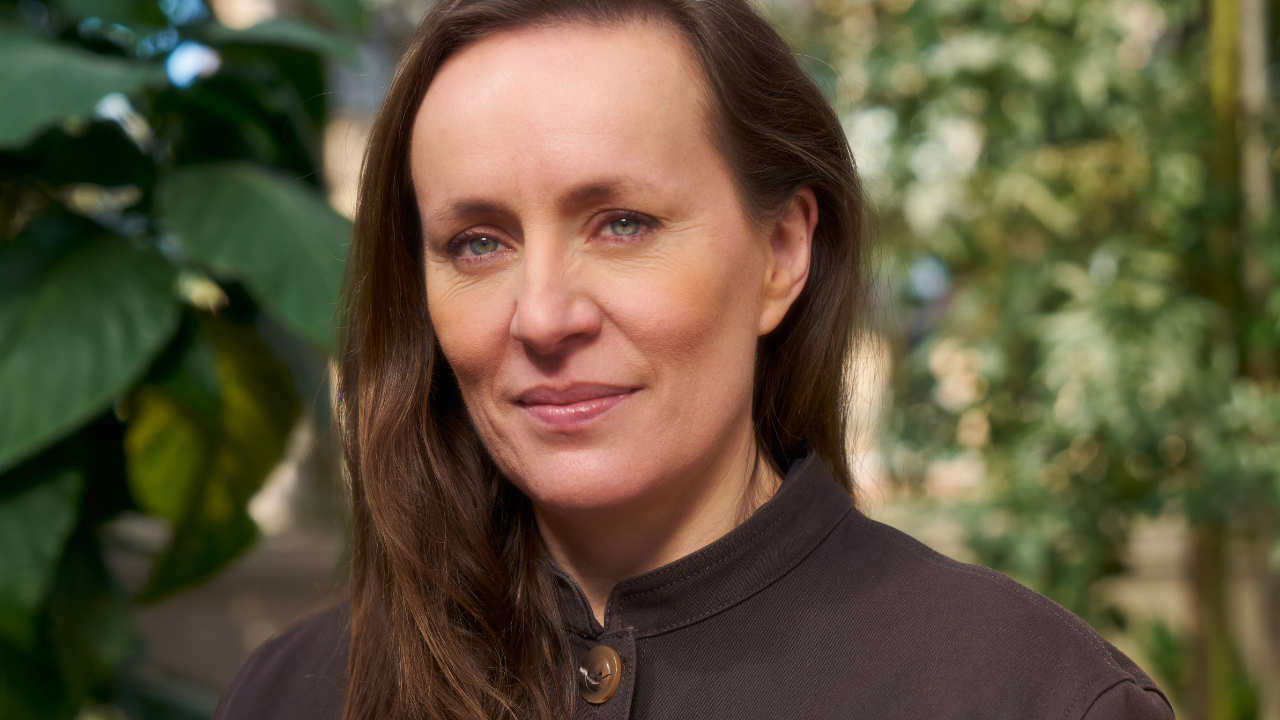Grada Kilomba’s Excavation of History
Victoria Adukwei Bulley speaks with the artist about psychoanalysis, storytelling and how new languages can unpack historical trauma
Victoria Adukwei Bulley speaks with the artist about psychoanalysis, storytelling and how new languages can unpack historical trauma

Victoria Adukwei Bulley Your art practice is rooted in an interrogation of the self. Does that stem from your background as a trained psychoanalyst?
Grada Kilomba Psychoanalysis works with the unconscious. It works with associations, dreams, images, metaphors, sounds, memories and traumas that define who you are and what your political reality is. To go from there to writing, storytelling, staging and visualizing human conflicts and humanity is a simple, natural continuity for me. It’s like writing poetry.
VAB I wondered whether we could talk about the storytelling of Portuguese identity, about the identities that have formed from colonialism and empire. There’s a connection between what you’ve said about psychoanalysis and how the apparatus of state machinery can generate its own psycho-narrative. How does your work respond to those narratives?
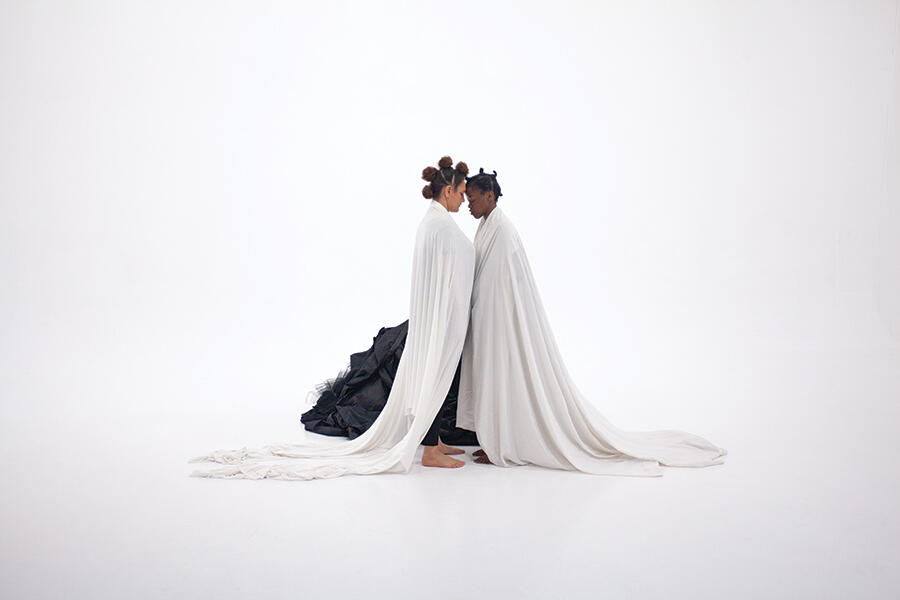
GK I’m not so interested in focusing on nations, nationalities and countries. I want to go beyond those borders, to define myself beyond that. I’m not interested in pinning myself or my narrative to a specific country. I’m much more interested in creating work that raises questions around humanity, that invites the audience to re-think who represents the human condition and who doesn’t – and why. I think that goes beyond nationhood.
I’m Portuguese and you’re British, but we share this deeply traumatic and very violent history that reaches back 500 years across the globe. It is a collective colonial history that keeps interrupting our present with new and sophisticated politics of dehumanization. A past that repeats itself in the present, like a ghost, because it has not been told properly and therefore remains at the level of denial. Denial is followed by guilt, guilt by shame, and shame by recognition, which allows for critical reflection to take place. This has enabled me and many other artists to develop work that experiments with how to elaborate a new language that goes beyond what was originally given to us. Unfortunately, many countries – including the one I come from – are still dominated by denial. This comes with abuse of power and authority, and does not allow new languages or narratives to emerge.

VAB As Black subjects, we don’t fit within the ideology of the nation. Regardless of where we are geographically or in terms of social status, it was not constructed for us. I often think about the Berlin Conference [1884–85], during which the African continent was divided up between European colonial powers.
GK We tend to look at life and at history chronologically, as separate moments, often viewing the past as something that does not co-exist with the present. But history shows us that we actually exist in a kind of timeless state, constantly travelling between time and space. The work we create as Black artists – particularly as Black women and LGBTQ+ artists – is so futuristic that it sometimes cannot be understood and read in the present. I feel like we have been given this beautiful task of moving through a matrix of time and space.
VAB I recently finished writing my poetry collection, Quiet [2022], and the research I was doing around the final section of the book was aided by the theorist and writer Tina Campt’s ideas around what she calls a ‘grammar of futurity’ in her 2017 book Listening to Images. This sense of a Black feminist practice that considers how we can live and build now with the vision of a future we don’t currently live in – and may also not live to see.
GK I love the work of Tina Campt, and of so many other Black women scholars and writers who were fundamental to me. I look at my work, and at the work of other Black women artists, and I think we are really designing the future, while also liberating the past. There’s a serious lack of vocabulary for reading our work. It is often reduced to being viewed through a historical lens, but this is futuristic work which is currently inventing a vocabulary to describe something for which no language – whether semantic or visual – yet exists.
This is what I find most fascinating about being an artist: experimenting knowing the language that was given to me cannot tell the stories I want to tell; to enter that zone of exploration and see what works and what doesn’t.
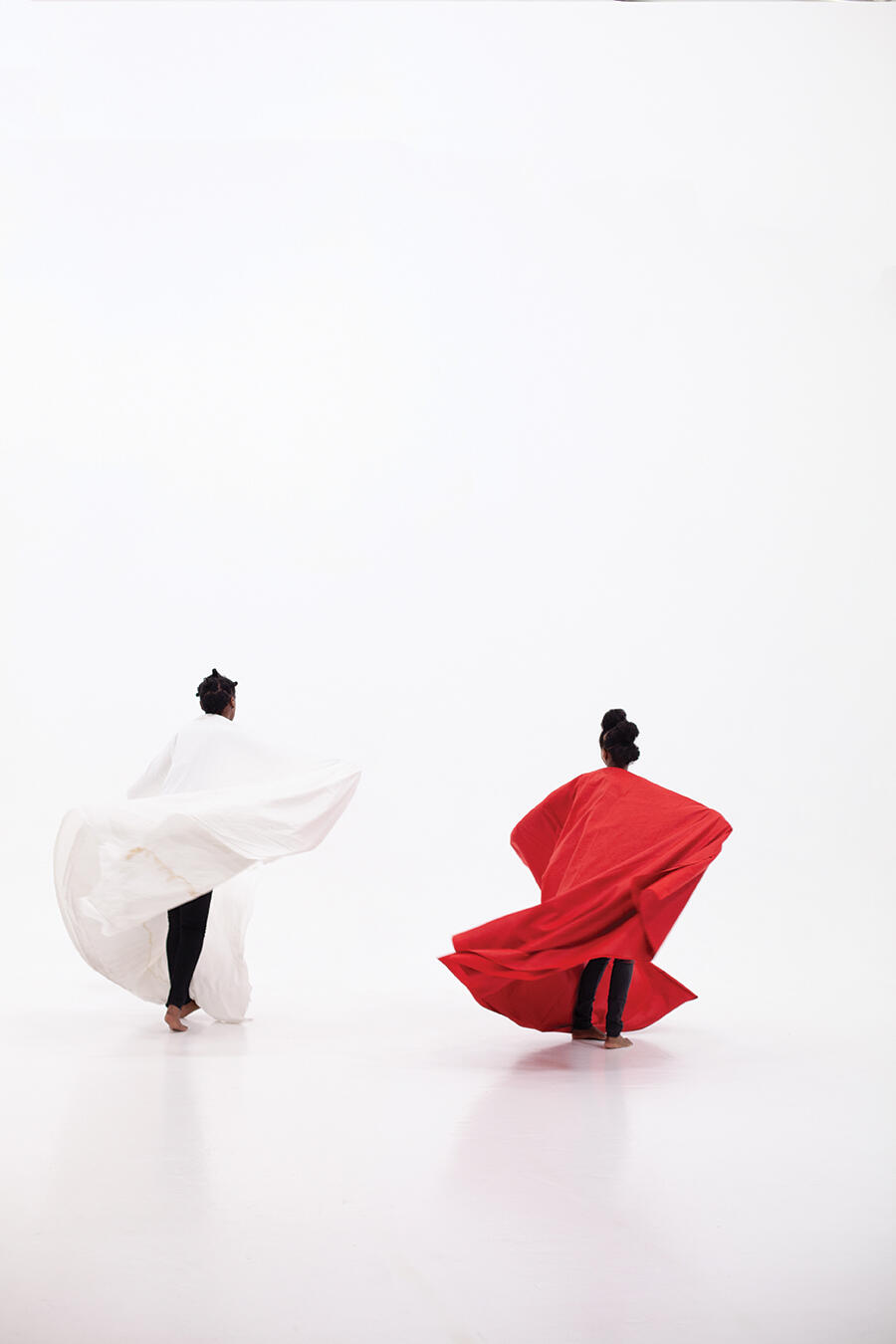
VAB What role does ritual play in your work? I’m thinking, in particular, about Table of Goods [2017], the composition of which includes coffee, sugar and cocoa. These are all products enmeshed with enslavement, yet there is something ritualized and healing in your arrangement of them. You are using the past, and the reality of what we know happened, in a different configuration to make something else feel possible. It feels spiritual.
GK Ritual is a strong element of my work. I find ritual very beautiful and spiritual, and it enables me to work with different disciplines at the same time: performance, movement, staging, composition and choreography. Ritual also allows us to produce memory, which I think is vital. There have been times in history when certain rituals and ceremonies were officially forbidden, especially those belonging to marginalized communities. But when you ritualize something, you create the means of remembering it. It helps you know who you are and where you came from, what your trajectory is. Time and space are often stolen from the oppressed. How do you construct your humanity when your space and time are being interrupted and dissolved? I think this is what ritual is able to preserve. History has been so traumatic that, sometimes, we want to forget it. We want to say: that was the past; now we are in the present. But it’s something that you cannot forget. And you cannot avoid remembering.
VAB Your work, O Barco/The Boat [2021], is 32 metres long and your largest installation to date. It consists of 140 burned wooden blocks, which together form the silhouette of the bottom of a boat – a boat that would carry enslaved Africans across the Atlantic Ocean.
GK Producing this work was magical. I wanted to install a life-size boat on the docks in Lisbon. It was important to me that the work was installed in a public forum, for the simple reason that public spaces are usually given to men – particularly to white men – because they have so much visibility, and they produce large-scale works for which they get paid a lot of money. So, it was incredibly powerful for me to have that space, close to so many monumental colonial buildings, and to develop a Black feminist vision of public sculpture. For me, that sense translated into a huge wooden sculpture that smells of burning wood. When wood burns, it really exposes its own skin: you can see its scars and wounds. You can project many different layers of history there.
I wrote an accompanying poem, which also felt incredibly empowering. It was translated into several languages – numerous African languages, including Kimbundu and Yoruba, as well as Arabic, Creole, English and Portuguese – then engraved onto the top of the wood and painted gold. When you enter that space, you are being invited to touch, to smell and to read. The work prompts a different choreography – not of looking up, as we usually do at artwork of that size and stature, but of descending to pay tribute and to touch. Without the audience knowing, I was inviting them to enter this choreography of contemplation.
This was the beginning of a three-part work. I have now concluded the second part, a new commission currently on view at Castello di Rivoli, Turin. The installation, 18 Verses of A Boat [2022], is focused on poetry and sonic landscapes, where human breathing negotiates its own space amidst the noise of wind and waves, exploring questions of displacement, water surveillance and repetition.
A third piece is being prepared for Kunsthalle Baden-Baden in collaboration with Museo Reina Sofía, which will be a large-scale video installation and opera performance. It’s an evolving project. The research is intense and the story wants to be told in different chapters, so it will continue to unfold. In the autumn, it will be at Somerset House in London.

VAB With O Barco/The Boat, memory and contemplation are key to understanding the emotional weight of the work and this shared history of loss in relation to the trans-Atlantic slave trade, alongside ritual and memory.
GK I like to play with the idea of timelessness: past, present and future co-existing in the same matrix. I recently exhibited the video trilogy, A World of Illusions [2016–19], at Palais de Tokyo in Paris. It was a large room, with a sculptural triangle dedicated to three Ancient Greek myths: Narcissus and Echo, Oedipus and Antigone. The audience enters a space of timelessness where questions on humanity are raised anew, through a postcolonial lens. The production was very much rooted in the idea of ritual and memory. Antigone, the daughter of Oedipus, had two brothers, Polynices and Eteocles, who killed each other in a battle for power. King Creon, who succeeded the throne, wouldn’t allow Antigone to bury or even mourn her brother Polynices, decreeing that his body should instead be left on the floor as food for dogs. I find this a fascinating story, because it raises again the question of which bodies are recognized as human and are allowed to have a burial ceremony, and which bodies aren’t. It returns to this sense of the cyclical nature of violence. For as long as we don’t tell history properly, its barbarity repeats itself.
The story of Antigone raises questions from the past that still are relevant to Black people today: how we have a history that was never given the physical space to be mourned, wept for and buried. I wanted to create this ritual, this dignifying burial: my work offers a physical space for commemoration, a place where you can go to mourn, to weep, to say goodbye.
VAB When you began the process of creating O Barco/The Boat, did you already know that there were going to be subsequent explorations?
GK I never have a plan. I’m very grateful that I receive these commissions from large institutions which enable me to start engaging with the questions that are on my mind. I believe one work leads you to the next, like a new chapter in a book. Table of Goods, for instance, carries a profound sadness but also a certain irony. I wanted to make it very clear that our history can be reduced to three ingredients: coffee, sugar and cacao. The tragic irony is that the enslavement of African people was mostly based on the production of these three ingredients – three ingredients that are not even essential.

VAB It’s absurd to think about the role they have played. Despite not being staple food crops, like rice, wheat or maize, they have shaped the world as we know it today.
GK Maybe this element of my practice stems from my background in psychoanalysis. I work with the incomprehensibly violent moments of history, the ones for which we have no language. Then, in my art, I try to generate that missing vocabulary, to find the names for things that have never had names, the names for things we are afraid of naming.
The work being made by Black female artists is incredibly complex and varied, but it is often reduced to just a few words: colonialism, post-colonialism, racism. I don’t know whether that’s down to laziness or ignorance – maybe both. Certainly, there is a lack of vocabulary with which to describe the complexity and the multiple layers that appear in the work. I think this is one of the greatest challenges for the new generation of Black female artists: to emphasize the complexity of our artistic practice, that it takes time to read, that neither the work nor the artist can be reduced to a single moment.
VAB Alongside Campt, the writings of Sylvia Wynter (for instance, On Being Human as Praxis, 2014) and Christina Sharpe come to mind – particularly Sharpe, who, in her book, In The Wake: On Blackness and Being [2016], urges us as Black scholars to become ‘undisciplined’. It’s not about not having a discipline; rather that the available categories of discipline cannot account for the work that we’re creating – not if the work is truly engaged in the labour of undoing and imagining anew. As we’ve mentioned already, the nature of this work resists the confines of nation, of psychoanalysis, of art, of installation, of poetry; in order to fulfil its goals, it must transcend.
GK I’ve always had the feeling that my work can be placed everywhere and nowhere at the same time. And that, in turn, is so important as an artist: to be everywhere and nowhere at the same time.
This article first appeared in frieze issue 228 with the headline ‘Interview: Grada Kilomba’.
Main image: O Barco/The Boat, 2021, performance and installation view. Courtesy: the artist, Goodman Gallery, BoCA Bienal, Lisbon, and MAAT Museum, Lisbon; photograph: Bruno Simão













